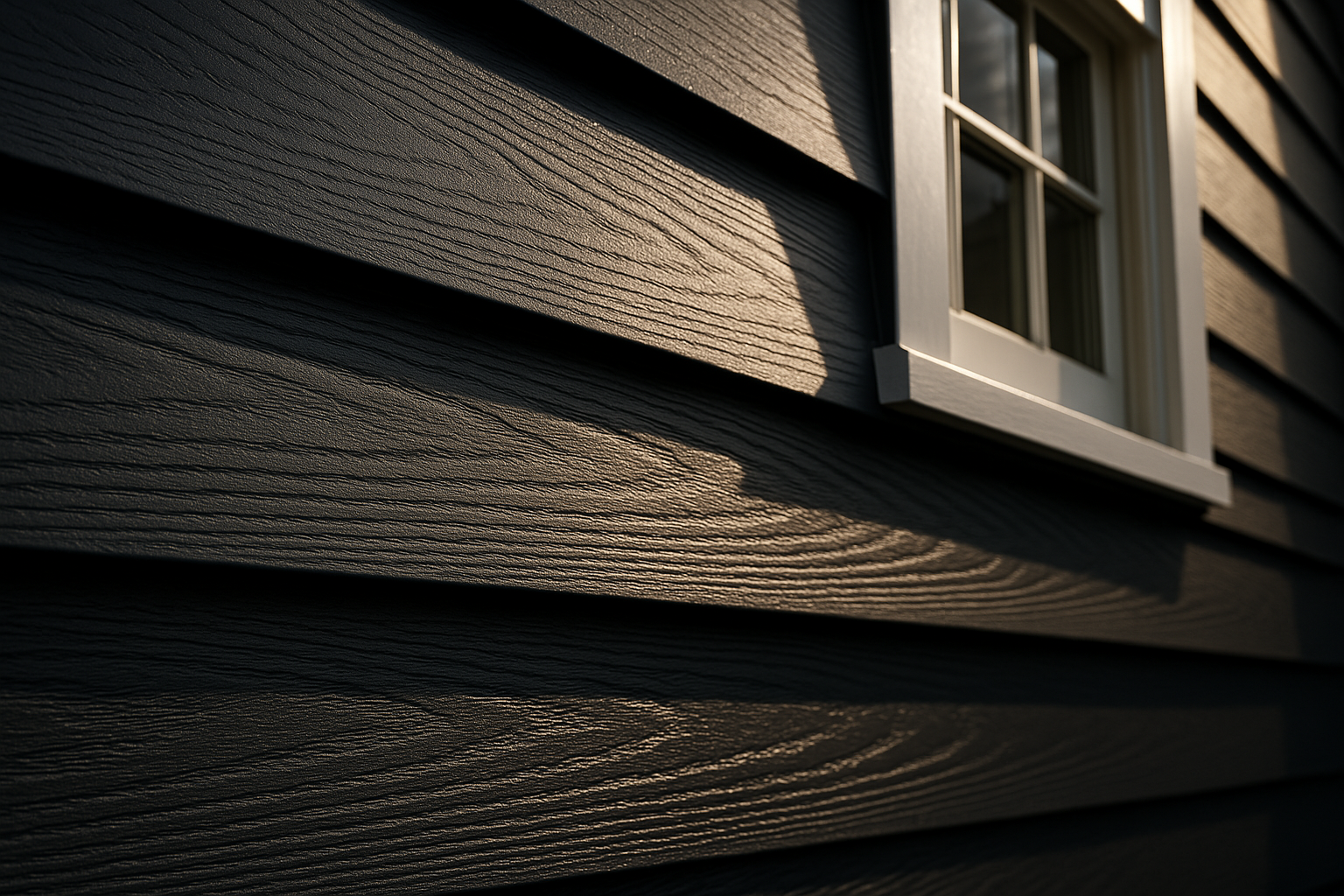Discover which siding material delivers the best performance, value, and longevity for your Massachusetts home’s unique climate challenges.
At Lux Square Construction, we understand that choosing the right siding for your Massachusetts home is one of the most important decisions you’ll make as a homeowner. The harsh New England winters, humid summers, and unpredictable weather patterns throughout the South Shore region demand siding materials that can withstand extreme temperature fluctuations while maintaining their beauty and structural integrity for decades. Whether you’re renovating a historic colonial in Stoughton, updating a contemporary home in Norwood, or building new construction anywhere in the greater Boston area, the choice between vinyl and fiber cement siding will significantly impact your home’s performance, maintenance requirements, and long-term value. Both materials offer distinct advantages and considerations that must be carefully weighed against Massachusetts’ specific climate conditions, local building codes, and your personal preferences for aesthetics and maintenance. Understanding the nuanced differences between these two popular siding options will help you make an informed decision that protects your investment while enhancing your home’s curb appeal and energy efficiency for years to come.
The decision between vinyl and fiber cement siding becomes even more critical when you consider Massachusetts’ unique architectural heritage and the diverse housing stock throughout the South Shore. From traditional Cape Cod styles to modern contemporary designs, each home type presents specific challenges and opportunities that influence siding selection. Our experience serving homeowners throughout Stoughton, Norwood, and surrounding communities has taught us that the best siding choice depends on multiple factors including your home’s architectural style, exposure to weather elements, maintenance preferences, and long-term budget considerations.
Understanding Massachusetts Climate Challenges for Siding Materials
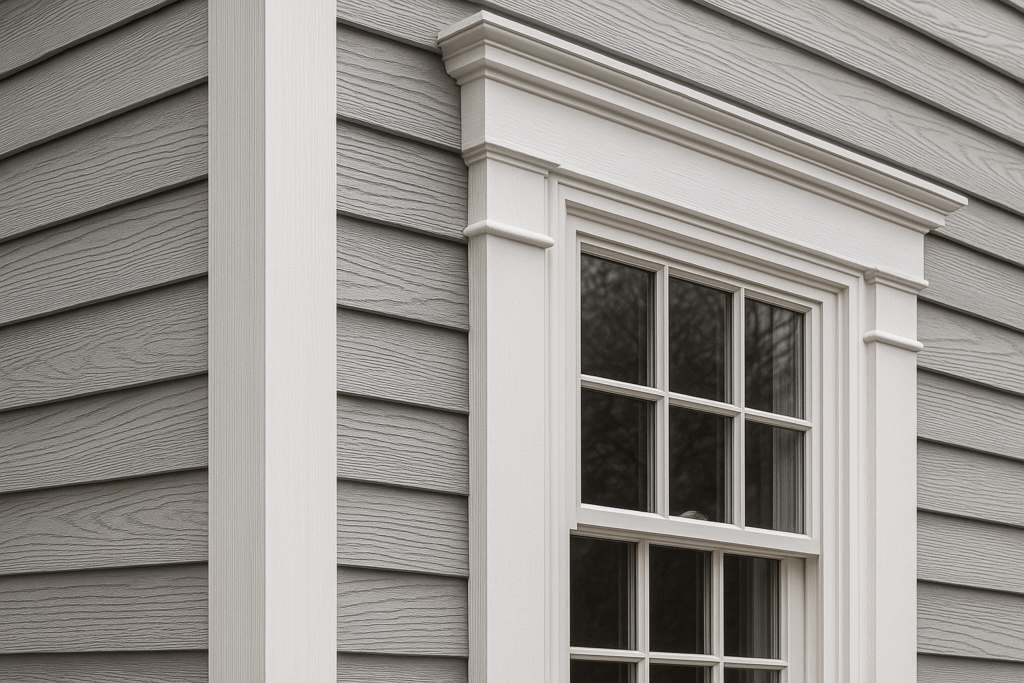
Massachusetts presents unique challenges for exterior siding materials that homeowners must carefully consider when making their selection. The Commonwealth’s climate is characterized by significant seasonal temperature variations, with winter temperatures often dropping below freezing for extended periods and summer temperatures reaching into the 90s with high humidity levels. This dramatic temperature swing, sometimes occurring within a single day during transitional seasons, creates expansion and contraction cycles that can stress siding materials over time.
The coastal influence throughout much of the South Shore region introduces additional considerations, including salt air exposure that can accelerate corrosion and weathering of certain materials. Areas closer to the Atlantic Ocean, including parts of the South Shore that Lux Square Construction serves, experience higher humidity levels and salt-laden air that can impact siding performance and longevity. These coastal conditions require siding materials that resist moisture penetration, salt corrosion, and the UV degradation that comes with reflected sunlight off water surfaces.
Winter weather patterns in Massachusetts include not only snow and ice accumulation but also the freeze-thaw cycles that can be particularly damaging to siding materials. Ice dams, a common problem in New England homes, can create moisture backup that tests the water resistance of siding systems. The weight of snow and ice accumulation, combined with the expansion forces of freezing water, creates stress points that inferior siding materials may not withstand over multiple winter seasons.
Wind exposure is another critical factor, particularly during nor’easter storms that can bring sustained winds of 40-60 mph with gusts exceeding 70 mph. These weather events test the structural integrity of siding installations and highlight the importance of proper installation techniques and high-quality materials. The combination of wind-driven rain and temperature extremes during these storms creates some of the most challenging conditions that siding materials will face.
1. Vinyl Siding: The Popular Choice for Massachusetts Homeowners
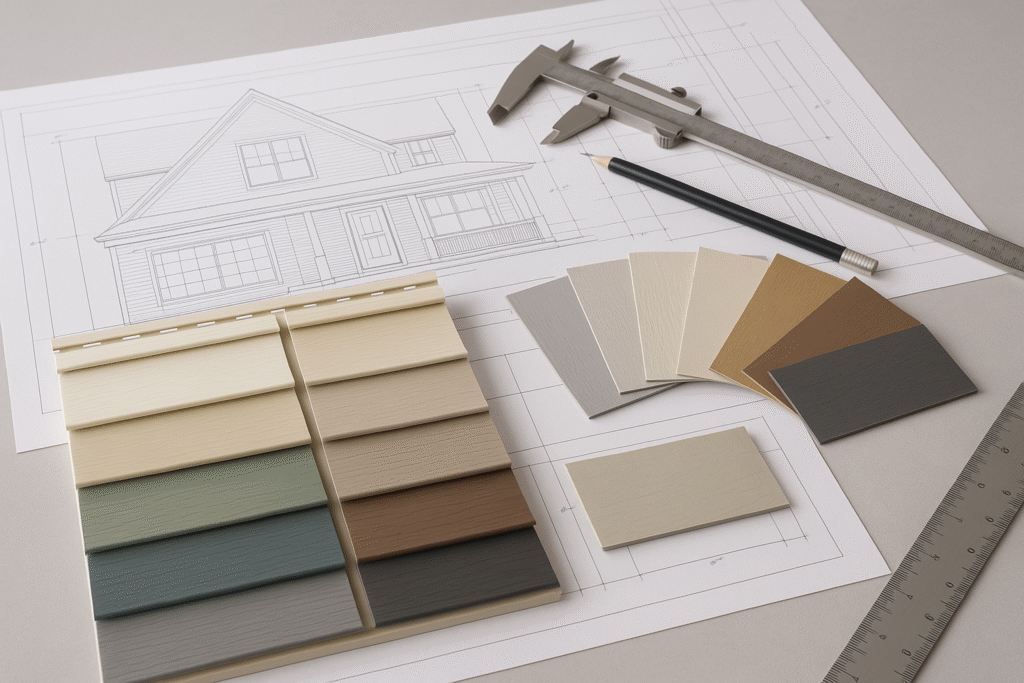
Vinyl siding has become increasingly popular among Massachusetts homeowners due to its combination of affordability, low maintenance requirements, and improved performance characteristics in modern formulations. Today’s vinyl siding products are significantly more durable and weather-resistant than earlier generations, with enhanced UV protection, impact resistance, and color retention that make them well-suited for New England’s challenging climate conditions.
The manufacturing process for quality vinyl siding involves multiple layers and additives specifically designed to address common performance concerns. Modern vinyl siding typically includes UV inhibitors that prevent the chalking and fading that plagued earlier vinyl products, while impact modifiers improve resistance to hail damage and accidental impacts from lawn equipment or sports equipment. The cellular structure of vinyl provides natural insulation properties that can contribute to improved energy efficiency when properly installed with appropriate backing materials.
Installation advantages of vinyl siding include its lightweight nature, which reduces structural stress on older homes and simplifies the installation process. The interlocking panel system, when properly installed by experienced contractors like Lux Square Construction, creates a weather-resistant barrier that effectively sheds water while allowing for the thermal expansion and contraction that occurs with Massachusetts’ temperature variations. The material’s flexibility allows it to accommodate building movement without cracking or splitting, a significant advantage in older homes that may experience settling or seasonal movement.
Color options for vinyl siding have expanded dramatically in recent years, with manufacturers offering everything from traditional whites and earth tones to bold contemporary colors and realistic wood grain textures. The through-color construction of quality vinyl siding means that minor scratches or scuffs won’t expose a different colored substrate, maintaining the appearance even after minor damage. Advanced manufacturing techniques now produce vinyl siding with realistic wood grain textures and varied color tones that closely mimic natural wood siding at a fraction of the cost and maintenance requirements.
Maintenance requirements for vinyl siding are minimal compared to most other siding materials, requiring only periodic cleaning with soap and water to maintain its appearance. The non-porous surface resists dirt accumulation and doesn’t require painting, staining, or sealing like wood or fiber cement options. This low maintenance characteristic is particularly appealing to busy homeowners or those who prefer to minimize ongoing home maintenance tasks.
However, vinyl siding does have limitations that Massachusetts homeowners should consider. Extreme cold can make vinyl more brittle and susceptible to impact damage, though modern formulations have significantly improved cold-weather performance. The material can also expand and contract noticeably with temperature changes, requiring proper installation techniques to accommodate this movement without creating gaps or buckling. While vinyl siding is generally durable, it can be damaged by extreme heat sources and may not be the best choice for homes with south-facing exposures that receive intense afternoon sun in areas with limited air circulation.
2. Fiber Cement Siding: The Premium Performance Option
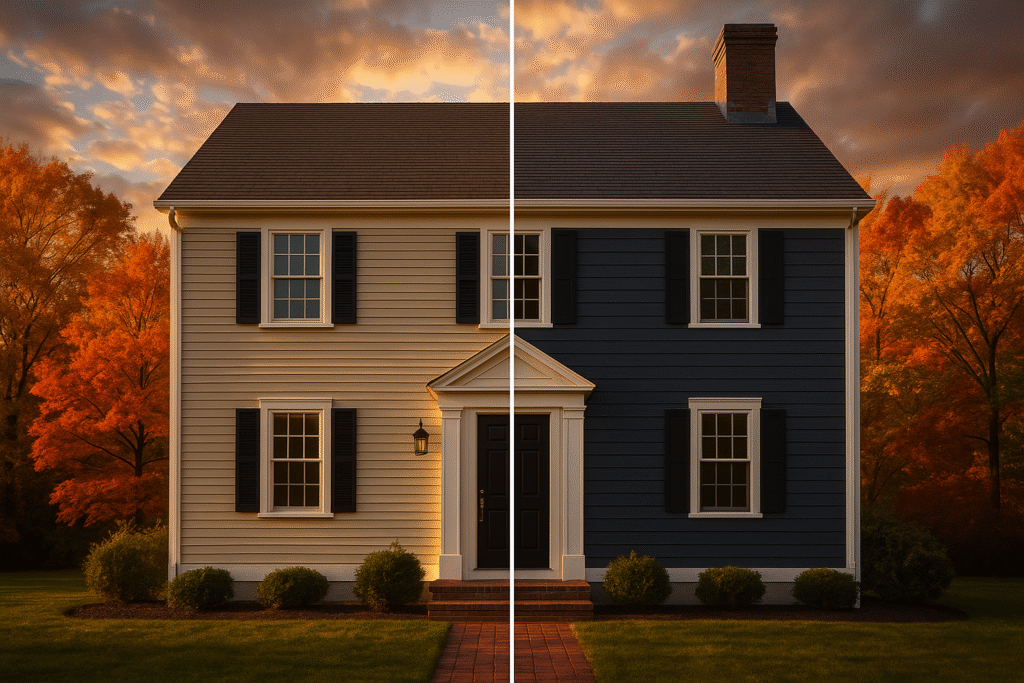
Fiber cement siding represents the premium end of the siding market, offering exceptional durability, fire resistance, and aesthetic versatility that makes it an increasingly popular choice for discerning Massachusetts homeowners. Composed of cement, sand, and cellulose fibers, this engineered material combines the best characteristics of multiple materials to create a siding option that excels in harsh climate conditions while offering unlimited design possibilities.
The manufacturing process for fiber cement siding creates a dense, non-combustible material that provides superior fire resistance compared to vinyl or wood siding options. This fire resistance can be particularly valuable in Massachusetts, where dry summer conditions and proximity to wooded areas can increase fire risk. Many insurance companies recognize the fire-resistant properties of fiber cement siding and may offer premium discounts for homes with this material, potentially offsetting some of the higher initial cost over time.
Durability characteristics of fiber cement siding make it exceptionally well-suited for Massachusetts’ challenging climate conditions. The material is virtually immune to moisture damage, insect infestation, and rot, eliminating many of the maintenance concerns associated with wood siding. Fiber cement’s dimensional stability means it won’t warp, twist, or split like wood, and it won’t expand and contract as dramatically as vinyl siding, maintaining consistent gaps and alignment even through extreme temperature variations.
The aesthetic versatility of fiber cement siding is perhaps its greatest advantage for homeowners who want the appearance of natural wood without the associated maintenance requirements. Modern fiber cement products can replicate virtually any wood siding style, from traditional clapboard and shingle patterns to contemporary board-and-batten designs. The material accepts paint exceptionally well and can be factory-finished in virtually any color, with some manufacturers offering 15-year paint warranties that guarantee color retention and performance.
Installation considerations for fiber cement siding require experienced contractors familiar with the material’s specific requirements. The material is significantly heavier than vinyl siding, requiring proper structural support and specialized cutting tools to achieve clean, precise cuts. Proper installation techniques are critical for fiber cement siding performance, including appropriate flashing details, caulking procedures, and fastener selection to prevent moisture infiltration and ensure long-term durability.
Maintenance requirements for fiber cement siding are moderate, typically requiring repainting every 10-15 years depending on exposure conditions and paint quality. However, this maintenance schedule is still significantly less demanding than wood siding, which may require painting or staining every 3-5 years. The material’s resistance to moisture, insects, and impact damage means that properly installed fiber cement siding can provide decades of service with minimal maintenance beyond periodic cleaning and eventual repainting.
Cost considerations for fiber cement siding include both higher material costs and increased installation expenses compared to vinyl siding. However, the material’s longevity, low maintenance requirements, and potential insurance savings can make it cost-effective over the long term. Many homeowners find that the superior aesthetics and performance characteristics of fiber cement siding justify the additional investment, particularly for high-end homes or historically significant properties where appearance is paramount.
3. Performance Comparison in Massachusetts Weather Conditions
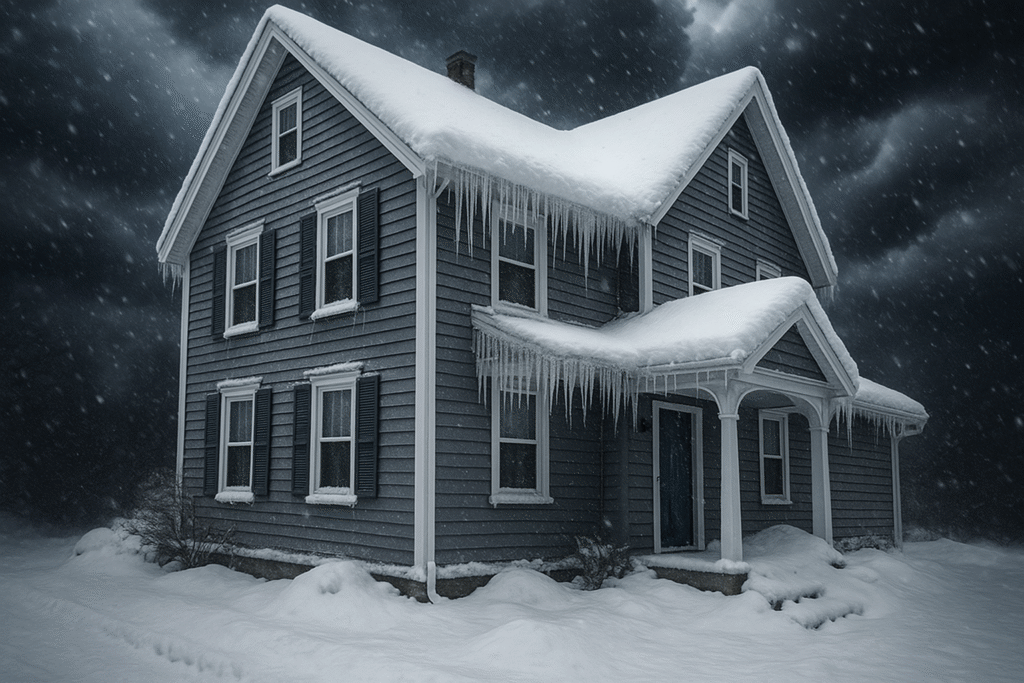
When evaluating siding materials for Massachusetts homes, performance in specific weather conditions becomes the determining factor for long-term satisfaction and value. The state’s diverse climate patterns, from coastal humidity to inland temperature extremes, create a comprehensive testing environment that reveals the strengths and weaknesses of different siding materials over time.
Winter performance differences between vinyl and fiber cement siding become apparent during extended cold periods and freeze-thaw cycles. Vinyl siding’s thermal expansion and contraction can be more pronounced during rapid temperature changes, potentially creating gaps at joints or causing panels to pull away from fasteners if not properly installed. However, modern vinyl formulations include cold-weather additives that maintain flexibility even at sub-zero temperatures, reducing the risk of cracking or impact damage during winter months.
Fiber cement siding demonstrates superior dimensional stability during winter conditions, maintaining consistent gaps and alignment even through extreme temperature variations. The material’s thermal mass helps moderate temperature swings at the building envelope, potentially contributing to improved energy efficiency during heating season. However, fiber cement’s higher thermal conductivity compared to vinyl can create more pronounced thermal bridging if not properly detailed with continuous insulation systems.
Summer performance characteristics reveal different advantages for each material. Vinyl siding’s lighter color options and reflective properties can help reduce cooling loads during hot summer months, while darker colors may experience more significant thermal expansion that requires careful installation detailing. The material’s cellular structure provides some insulation value, though this benefit is modest compared to dedicated insulation systems.
Fiber cement siding’s thermal mass can help moderate temperature swings during summer months, potentially reducing peak cooling loads. The material’s ability to accept any paint color without performance degradation allows homeowners to choose optimal colors for their specific exposure conditions. Dark colors that might cause excessive expansion in vinyl siding can be safely used with fiber cement, providing greater design flexibility.
Moisture resistance performance is critical in Massachusetts’ humid climate and during periods of wind-driven rain. Vinyl siding’s interlocking panel system, when properly installed, creates an effective drainage plane that sheds water efficiently. However, the material’s expansion and contraction can create opportunities for water infiltration if installation details are inadequate or if the siding system experiences damage.
Fiber cement siding’s dense, non-porous surface provides excellent moisture resistance when properly painted and maintained. The material won’t absorb moisture like wood siding, eliminating concerns about rot, warping, or dimensional changes due to moisture content variations. However, proper installation details, including flashing and caulking, remain critical for preventing moisture infiltration at joints and penetrations.
Wind resistance capabilities become important during nor’easter storms and other severe weather events common in Massachusetts. Vinyl siding’s lightweight nature can be both an advantage and a disadvantage in high winds. While the material won’t add significant wind load to the structure, improperly fastened panels can be damaged or removed by high winds. Modern vinyl siding systems include improved fastening details and wind-resistant designs that perform well in typical Massachusetts wind conditions.
Fiber cement siding’s weight and rigidity provide excellent wind resistance when properly installed. The material’s structural properties allow it to resist wind uplift and impact damage better than vinyl siding, making it a preferred choice for homes in exposed locations or areas prone to severe weather. However, the increased weight requires proper structural support and fastening to achieve optimal wind resistance performance.
4. Cost Analysis and Long-Term Value Considerations
Understanding the total cost of ownership for siding materials requires analysis beyond initial material and installation costs to include maintenance expenses, energy performance impacts, and potential effects on home value over time. This comprehensive cost analysis becomes particularly important for Massachusetts homeowners who must balance upfront investment with long-term performance in challenging climate conditions.
Initial material costs for vinyl siding typically range from $3 to $8 per square foot for quality products, with premium options featuring enhanced durability and aesthetic features commanding higher prices. Installation costs for vinyl siding are generally lower than fiber cement due to the material’s lighter weight and simpler installation requirements, typically adding $2 to $4 per square foot for professional installation by experienced contractors like Lux Square Construction.
Fiber cement siding material costs typically range from $5 to $12 per square foot, with premium products and specialty profiles commanding higher prices. Installation costs for fiber cement siding are generally higher due to the material’s weight, specialized cutting requirements, and more complex installation details, typically adding $4 to $8 per square foot for professional installation. However, these higher initial costs must be evaluated against the material’s superior longevity and performance characteristics.
Maintenance cost projections reveal significant differences between the two materials over time. Vinyl siding requires minimal maintenance beyond periodic cleaning, with occasional caulking or panel replacement representing the primary ongoing expenses. Quality vinyl siding can maintain its appearance and performance for 20-30 years with minimal maintenance investment, making it an attractive option for homeowners seeking low ongoing costs.
Fiber cement siding requires periodic repainting every 10-15 years, representing a significant maintenance expense that must be factored into long-term cost calculations. Professional painting costs for fiber cement siding typically range from $2 to $4 per square foot, depending on surface preparation requirements and paint quality. However, this maintenance schedule is still more favorable than wood siding, and the superior durability of fiber cement means fewer repairs and replacements over time.
Energy performance impacts can affect long-term operating costs for both siding materials. Vinyl siding’s cellular structure provides modest insulation value, while fiber cement’s thermal mass can help moderate temperature swings. However, both materials’ energy performance is primarily determined by the insulation system behind the siding rather than the siding material itself. Proper installation with continuous insulation and air sealing provides the greatest energy performance benefits regardless of siding material choice.
Insurance considerations may favor fiber cement siding due to its fire-resistant properties and superior durability. Some insurance companies offer premium discounts for homes with fiber cement siding, particularly in areas with elevated fire risk. These potential savings should be factored into long-term cost calculations, as they can offset some of the higher initial investment over time.
Resale value impacts vary depending on local market conditions and buyer preferences. In many Massachusetts markets, fiber cement siding is viewed as a premium feature that can enhance home value and marketability. The material’s association with quality construction and low maintenance requirements appeals to many buyers, potentially providing better returns on investment in competitive real estate markets.
5. Installation Considerations for Massachusetts Homes
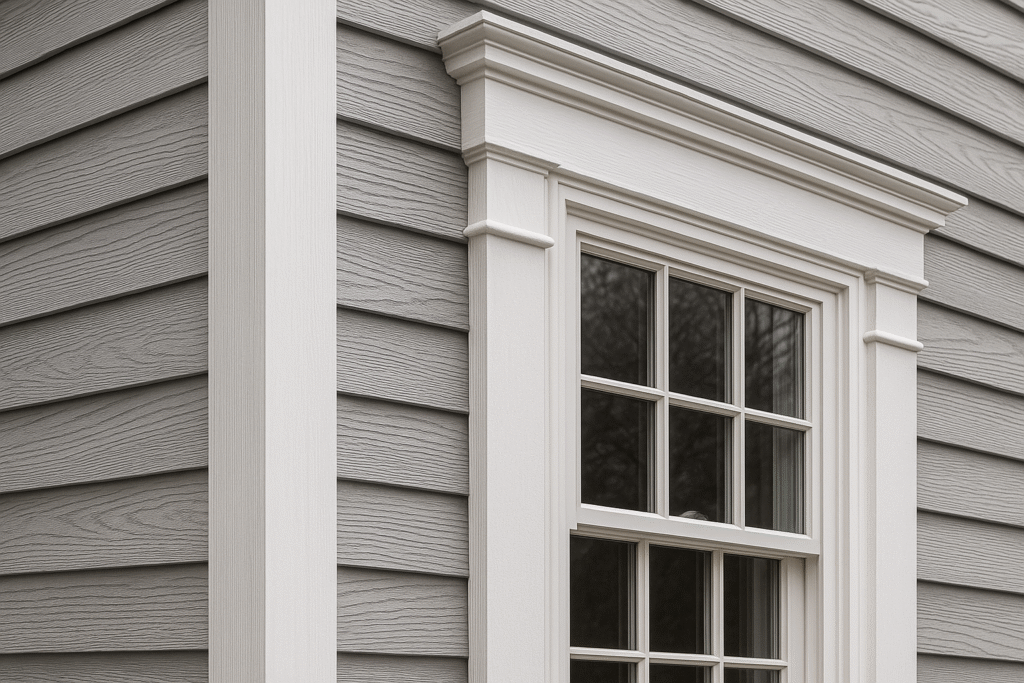
Proper installation techniques are critical for both vinyl and fiber cement siding performance in Massachusetts’ challenging climate conditions. The state’s temperature extremes, moisture exposure, and wind conditions require installation methods that accommodate material movement, prevent moisture infiltration, and ensure long-term durability. Understanding these installation requirements helps homeowners make informed decisions and ensures optimal performance regardless of material choice.
Structural considerations differ significantly between vinyl and fiber cement siding installations. Vinyl siding’s lightweight nature allows installation over most existing wall systems without structural modifications, making it an attractive option for renovation projects where structural capacity may be limited. However, proper fastening techniques remain critical to prevent wind damage and ensure the siding system can accommodate thermal movement without failure.
Fiber cement siding’s increased weight requires careful evaluation of existing wall structure and may necessitate structural reinforcement in some applications. The material’s weight can stress older framing systems or foundations, particularly in renovation projects where existing structural capacity is unknown. Professional evaluation by experienced contractors ensures that the wall system can safely support fiber cement siding loads over time.
Moisture management details are critical for both siding materials but require different approaches based on each material’s characteristics. Vinyl siding installations rely on the interlocking panel system and proper overlap details to shed water, while allowing for drainage behind the siding through weep holes and ventilation gaps. Proper installation includes house wrap or building paper behind the siding to provide secondary moisture protection.
Fiber cement siding installations require more comprehensive moisture management details, including proper flashing at all penetrations, caulking at joints, and attention to end cuts that may expose the material’s core. The material’s density requires careful attention to fastener selection and placement to prevent moisture infiltration while accommodating the material’s minimal thermal movement.
Thermal movement accommodation represents a critical installation consideration for both materials. Vinyl siding requires installation techniques that allow for significant thermal expansion and contraction, including proper fastener placement, gap allowances at joints, and flexible caulking materials that can accommodate movement without failure. Improper installation that restricts thermal movement can result in buckling, warping, or fastener failure.
Fiber cement siding’s superior dimensional stability simplifies thermal movement accommodation but still requires proper installation techniques to ensure long-term performance. The material’s minimal thermal movement allows for tighter installation tolerances and more predictable performance over time, but proper fastening and joint sealing remain critical for moisture protection.
Fastener selection and placement techniques vary significantly between the two materials. Vinyl siding requires fasteners that allow for thermal movement while maintaining secure attachment, typically using galvanized or stainless steel nails with specific placement requirements. Over-driving fasteners or restricting panel movement can cause installation failures that compromise performance.
Fiber cement siding requires corrosion-resistant fasteners with sufficient holding power to support the material’s weight and resist wind uplift forces. Stainless steel or hot-dipped galvanized fasteners are typically required, with specific fastener schedules based on wind exposure and structural requirements. Proper fastener placement and penetration depth are critical for achieving optimal performance.
Making the Right Choice for Your Massachusetts Home
Selecting between vinyl and fiber cement siding for your Massachusetts home requires careful consideration of multiple factors including budget, aesthetic preferences, maintenance tolerance, and long-term performance expectations. At Lux Square Construction, we work with homeowners throughout the South Shore to evaluate these factors and recommend the siding solution that best meets their specific needs and circumstances.
Budget considerations often serve as the primary decision factor for many homeowners, with vinyl siding offering lower initial costs and minimal ongoing maintenance expenses. For homeowners seeking an attractive, durable siding solution with predictable long-term costs, quality vinyl siding can provide excellent value and performance in Massachusetts’ climate conditions. The material’s improved formulations and installation techniques have addressed many historical performance concerns, making modern vinyl siding a viable option for most applications.
Aesthetic preferences may favor fiber cement siding for homeowners who prioritize the authentic appearance of wood siding without the associated maintenance requirements. The material’s ability to replicate any wood siding style, combined with unlimited color options and superior paint retention, makes it the preferred choice for high-end homes or historically significant properties where appearance is paramount.
Maintenance tolerance varies significantly among homeowners, with some preferring the minimal maintenance requirements of vinyl siding while others are comfortable with the periodic repainting required for fiber cement siding. Understanding your personal preferences and lifestyle constraints helps determine which material’s maintenance requirements align with your expectations and capabilities.
Performance expectations in Massachusetts’ challenging climate conditions may favor fiber cement siding for homeowners who prioritize maximum durability and weather resistance. The material’s superior fire resistance, impact resistance, and dimensional stability provide peace of mind for homeowners in exposed locations or areas prone to severe weather conditions.
Home value considerations may influence material selection for homeowners planning to sell within the next decade. While both materials can enhance home value when properly installed, fiber cement siding’s premium positioning and association with quality construction may provide better returns in competitive real estate markets.
Ready to transform your home’s exterior with the perfect siding solution for Massachusetts’ unique climate challenges? Contact Lux Square Construction today for a comprehensive consultation and detailed estimate. Our experienced team will evaluate your home’s specific requirements, discuss your preferences and budget, and recommend the siding material and installation approach that delivers optimal performance and value for your investment. Don’t let another harsh New England winter compromise your home’s protection and beauty – call us at (781) 408-5000 or visit our Stoughton showroom to discover how the right siding choice can enhance your home’s durability, efficiency, and curb appeal for decades to come.
Frequently Asked Questions
How long does vinyl siding typically last in Massachusetts weather conditions? Quality vinyl siding can last 20-30 years in Massachusetts when properly installed and maintained. Modern vinyl formulations include UV inhibitors and impact modifiers that significantly improve durability compared to older products. The material’s performance depends on installation quality, exposure conditions, and maintenance practices, with homes in protected locations often achieving longer service life than those in exposed coastal areas.
Is fiber cement siding worth the extra cost for Massachusetts homes? Fiber cement siding can provide excellent value for Massachusetts homes when longevity, low maintenance, and aesthetic preferences justify the higher initial investment. The material’s superior durability, fire resistance, and unlimited design options make it particularly attractive for high-end homes, historically significant properties, or locations with challenging exposure conditions. Consider your long-term plans, maintenance preferences, and budget when evaluating the cost-benefit relationship.
Which siding material performs better during New England ice storms? Both materials can perform well during ice storms when properly installed, but fiber cement siding generally offers superior impact resistance and dimensional stability. Vinyl siding’s flexibility can be advantageous in some ice conditions but may be more susceptible to impact damage from falling ice or debris. Proper installation techniques and quality materials are more important than material choice for ice storm performance.
Can I install new siding over existing siding on my Massachusetts home? Installation over existing siding is possible with vinyl siding in many cases, provided the existing siding is in good condition and properly attached. Fiber cement siding’s increased weight typically requires removal of existing siding to ensure adequate structural support. Local building codes and manufacturer requirements should be consulted before proceeding with any over-siding installation.
How do Massachusetts building codes affect siding material selection? Massachusetts building codes include specific requirements for wind resistance, fire safety, and energy efficiency that can influence siding material selection and installation methods. Both vinyl and fiber cement siding can meet code requirements when properly installed, but specific details may vary based on location, exposure conditions, and local amendments to state codes. Professional contractors ensure compliance with all applicable codes and standards.
What maintenance is required for each siding type in Massachusetts? Vinyl siding requires minimal maintenance, typically limited to annual cleaning with soap and water and occasional caulking or panel replacement. Fiber cement siding requires periodic repainting every 10-15 years, along with regular cleaning and inspection of caulked joints. Both materials benefit from annual inspections to identify and address minor issues before they become major problems.
How do these siding materials affect home insurance rates in Massachusetts? Fiber cement siding’s fire-resistant properties may qualify for insurance premium discounts with some carriers, particularly in areas with elevated fire risk. Vinyl siding typically doesn’t affect insurance rates significantly, though some carriers may consider the material’s impact resistance and durability when calculating premiums. Contact your insurance provider to understand how siding material choice might affect your specific policy rates.

